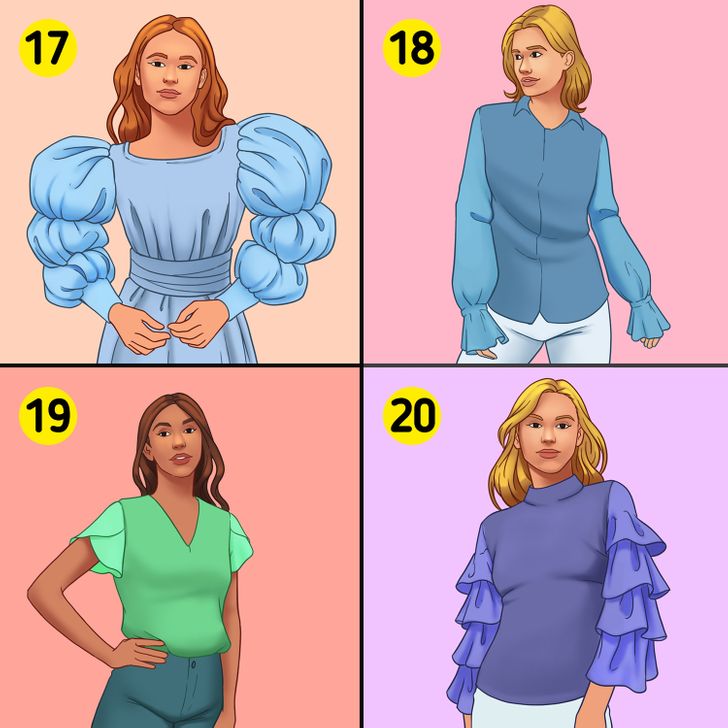A Guide to Different Sleeve Styles
If you’re interested in fashion, you might be looking for inspiration to create new pieces. In that case, knowing what kinds of sleeves there are could come in handy when you want to come up with original designs. 5-Minute Crafts brings you a quick overview on a style of sleeves you can use.
What sleeves are
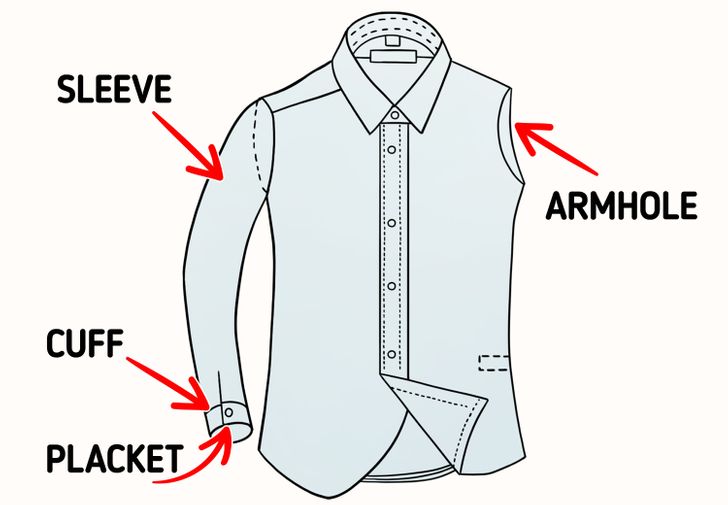
Sleeves are simply the part of a clothing item that covers arm and shoulders to protect them, keep them out of the sun, and/or provide warmth. These can be found in a wide range of items such as dresses, blouses, jackets, sweaters, etc. All sleeves have an opening at the end that the hand and arm pass through. This is called a sleeve placket.
Aside of their practical function, sleeves come in different styles that impact a garment’s silhouette, and create movement and structure. Some of the elements that can vary across styles are:
- Length: sleeves can be short, mid-length, or long.
- Tightness: sleeves can be either tight or loose.
- Finishing: sleeves can have a cuff or other type of finishing.
You will also come across clothing items that have no sleeves. These are called sleeveless items.
Types of sleeves
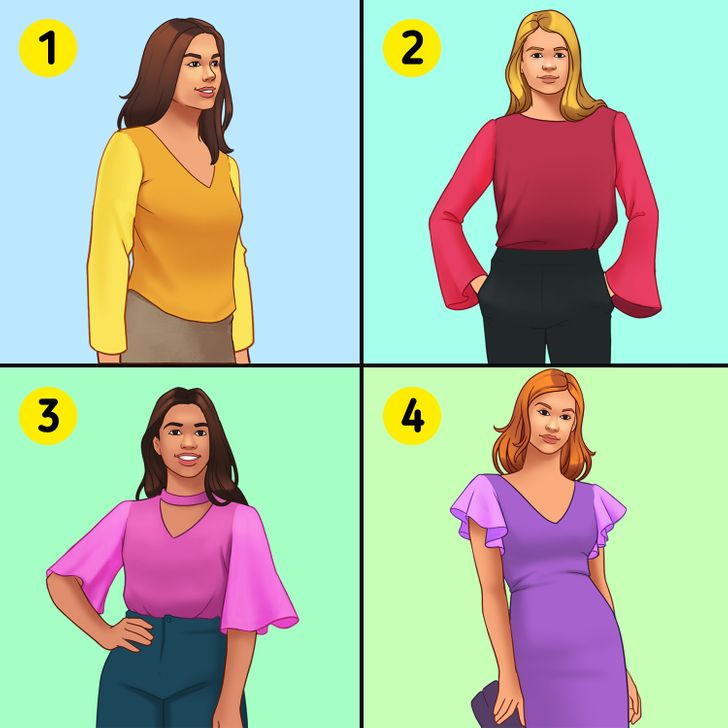
1. Set-in: This is a sleeve that’s attached to the garment’s armhole and sewn all the way around. Most sleeves that aren’t continuous with the bodice’s fabric are set-in sleeves.
2. Bell or peasant: This long sleeve is fitted around the shoulder and upper arm and flares out to the wrist, like a bell.
3. Butterfly: Also flares out from the shoulder, but it usually does not fully cover the arm.
4. Flutter: Very similar to a butterfly sleeve except it is generally a little shorter and wider, falling loosely.
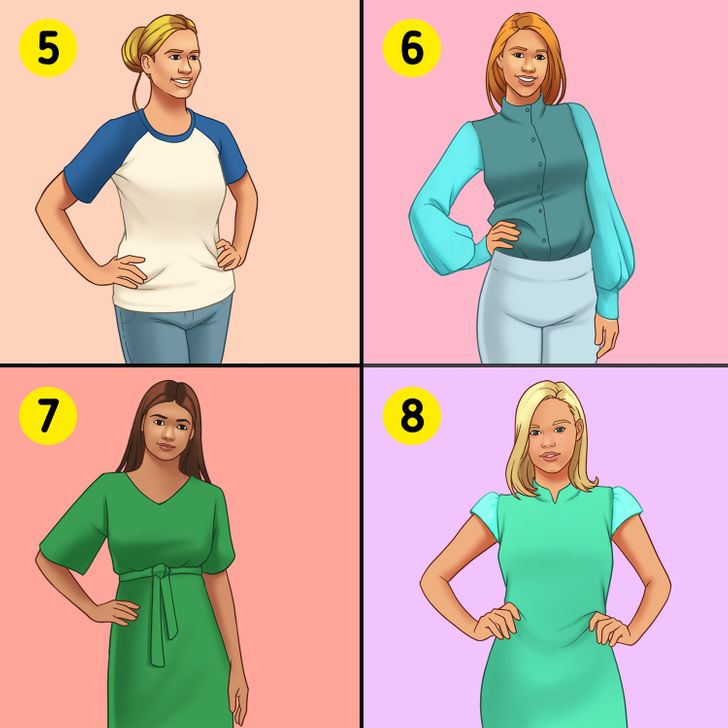
5. Raglan: This type of sleeve extends from a garment’s neckline, rather than from the shoulder. It allows better movement which is why it’s often used for baseball t-shirts.
6. Bishop: Because it flares out from the shoulder, a bishop sleeve has volume all the way to the cuff, where the fabric is tightly gathered.
7. Kimono: This sleeve is in one piece with the garment’s bodice instead of sewn on separately. It’s generally wide with a uniform circumference throughout. Despite the name, these are generally used for Chinese-style robes and not on Japanese kimonos where sleeves are usually sewn separately.
8. Cap: Extremely short sleeve that doesn’t extend very far from the shoulder and doesn’t go below the armpit. It can have a gathered, elastic seam or a loose seam.
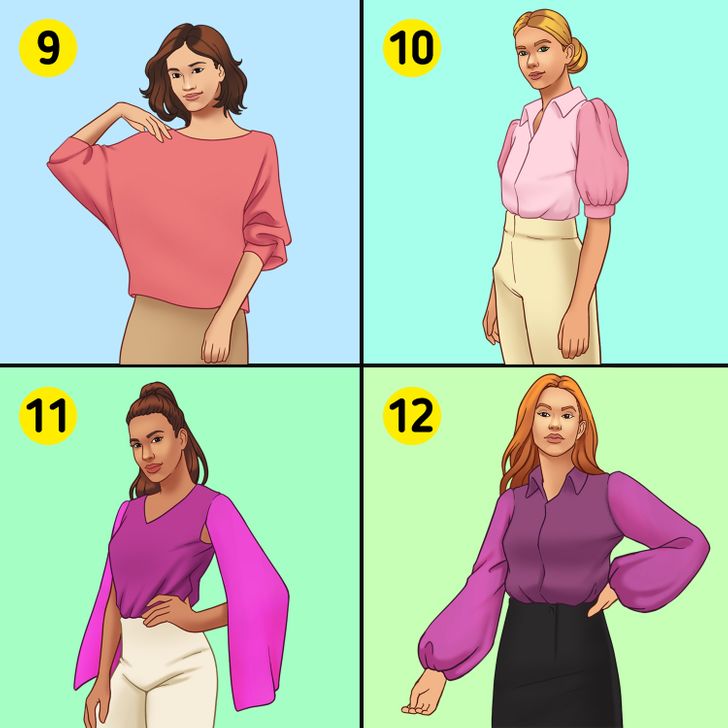
9. Dolman or batwing: Sleeves with a very deep armhole that get progressively narrower as you move to the wrist.
10. Puffed: A puffed sleeve is gathered at the shoulder and at the seam but is full and “puffy” in the middle.
11. Cape: Full and flowing sleeves that look like capes. The fabric is gathered at the shoulder and flares out like a cape from there.
12. Lantern: Long sleeve that balloons out between the wrist and the elbow and then gathers again around the wrist.
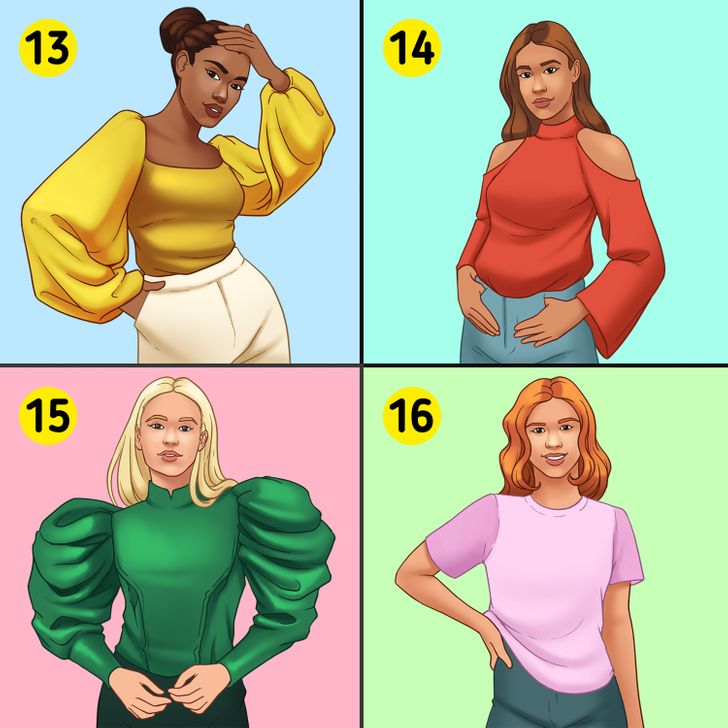
13. Balloon: Long, puffed sleeves that are gathered at the shoulder and then puffed out and gather back at the wrist. Sometimes, the sleeve puffs out lower than the shoulder, but it’s still a full puff rather than a tapered flare.
14. Slit or cold shoulder: A sleeve that has a slit down the center usually exposing part of the arm.
15. Leg-of-mutton: Gathered and puffed by the shoulder and upper arm and then fitted on the forearm.
16. T-shirt: Short, set-in sleeve that starts at the shoulder and ends at the middle of the upper arm.
